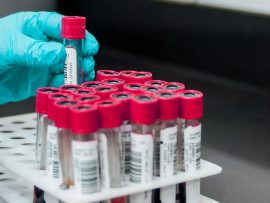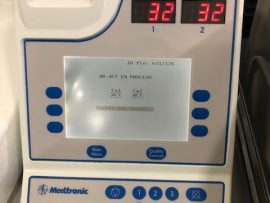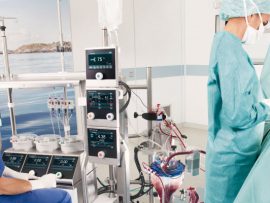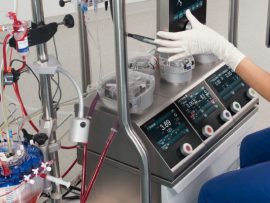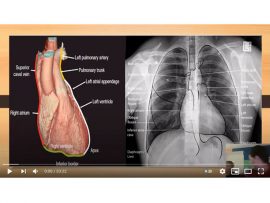Abstract Objectives after cardiac surgery remains of uncertain clinical significance. Therefore, we investigated the relationship of severity across urine output and creatinine domains with the risk for major adverse kidney events..
Read MoreAbstract Study objective Low (BIS) values have been associated with adverse postoperative outcomes. However, trials of optimizing BIS by titrating anesthetic administration have reported conflicting results. One potential explanation is that may..
Read MoreAbstract Highlights • Hemolysis due to CPB leads to an increase of serum free Hemoglobin(fHb) level. • Increase of serum fHb level had an independent association with postoperative AKI. •..
Read MoreSummary There are no data evaluating the microbiome in congenital heart disease following cardiopulmonary bypass. The authors evaluated patients with congenital heart disease undergoing cardiopulmonary bypass and noncardiac patients undergoing..
Read MoreAbstract Objective: Optimal selective cerebral perfusion (SCP) management for neonatal aortic arch surgery has not been extensively studied. We induced mild hypothermia during SCP and used the tissue oxygenation monitor..
Read MoreAbstract CARDIAC SURGERY is inherently complex and is associated with a high risk of perioperative bleeding. As such, it is responsible for a disproportionate percentage of annual blood product usage..
Read MoreAbstract Objectives: Evaluating whether there is a clinical benefit of using extracorporeal cytokine adsorption therapy in two indications. Design: Systematic review. Setting: Search on four databases, Medline, Embase, The Cochrane..
Read MoreAbstract Objectives: Cardiac surgery using cardiopulmonary bypass frequently provokes a systemic inflammatory response syndrome. This can lead to the development of low cardiac output syndrome (LCOS). Both of these can..
Read MoreAbstract Introduction Cardiopulmonary bypass (CPB) is a common procedure to maintain body perfusion during cardiac surgery. It is associated with a systemic inflammatory response, hemostasis and circulatory dysfunction that can..
Read MoreAbstract Background: Due to the substantial improvement in survival among pediatric patients undergoing congenital heart surgery, reducing early and long-term morbidity is becoming the major focus of care. Blood transfusion is..
Read MoreAbstract The outbreak of the novel coronavirus pandemic (COVID-19) has resulted in dramatic changes to the conduct of surgery both from a patient management perspective and in protecting healthcare providers...
Read MoreAbstract Objectives: Cardiopulmonary bypass surgery is complicated by metabolic acidosis, microvascular dysfunction, and capillary leak. The glycocalyx—a layer of proteins and sugars lining the vascular endothelium—is degraded during cardiopulmonary bypass...
Read MoreAbstract Background Recurrent observation of clot in the cardiopulmonary bypass circuit after the administration of a protamine test dose (PTD) prompted concern over the effects of PTDs on patient activated..
Read MoreAbstract A prospective, observational single-center study was carried out. Pediatric patients undergoing congenital heart defect surgery were evaluated before, during, and after surgery. At each time point, sublingual microcirculation and..
Read MoreAbstract Introduction: Neurologic complications of open thoracic aortic surgery are devastating problems in patients with severely diseased aortas. This study aimed to clarify whether directing the aortic cannula tip toward..
Read MoreAbstract Introduction: Minimally invasive aortic valve replacement (MIAVR) requires changes in cannulation strategy and cardiopulmonary bypass (CPB) management when compared to the conventional approach (CAVR). We aimed at evaluating if..
Read MoreAbstract Coagulation factor XII (fXII) is a plasma serine protease which belongs to the contact activation complex responsible for initiating the intrinsic coagulation pathway. fXII deficiency is a rare congenital..
Read MoreAbstract Microcirculatory disturbances are commonplace after cardiopulmonary bypass. Postoperative atrial fibrillation (POAF) occurs in nearly 30% of patients undergoing conventional cardiac surgery. Landiolol, a short-acting i.v. beta blocker, could reduce..
Read MoreAbstract Introduction: The superiority of pulsatile perfusion during cardiopulmonary bypass remains controversial. We analyzed the frequency-domain characteristics and organ protection of pulsatile and nonpulsatile flow in adult patients with valvular..
Read MoreAbstract Objective: Mesenchymal stromal cells have important immunomodulatory and neuroprotective properties. The aim of this study was to evaluate the feasibility of mesenchymal stromal cell administration into a cardiopulmonary bypass..
Read MoreAbstract Purpose Intravascular fluids are a necessary and universal component of cardiac surgical patient care. Both crystalloids and colloids are used to maintain or restore circulating plasma volume and ensure..
Read MoreAbstract Background: Delirium is a frequent complication after cardiac surgery and is associated with a higher incidence of morbidity and mortality and a prolonged hospital stay. However, knowledge of the variables..
Read MoreAbstract OBJECTIVES Cardiopulmonary bypass in cardiac surgery has been associated with several deleterious effects including haemodilution and systemic inflammation. Modified ultrafiltration (MUF) has been well established in paediatric..
Read MoreAbstract Objective To examine the altitude differences in the optimal perfusate oxygenation (PpO2) in patients who underwent cardiac surgery. Methods We included children (aged 1 month to 18 years) with surgically repaired between..
Read MoreAbstract OBJECTIVES Cardiopulmonary bypass in cardiac surgery has been associated with several deleterious effects including haemodilution and systemic inflammation. Modified ultrafiltration (MUF) has been well established in..
Read MoreAbstract Background Little is known regarding the effect of cardiopulmonary bypass (CPB) reoxygenation on cardiac function following tetralogy of Fallot repair. We hypothesized that hyperoxic reoxygenation would be more strongly..
Read MoreAbstract THE USE of cardiopulmonary bypass has enabled the delivery of complex cardiovascular surgical procedures. Cardiopulmonary bypass (CPB), at its best, involves a highly technical process that is executed carefully..
Read MoreAbstract Cardiopulmonary bypass (CPB) is required for the surgical correction of congenital heart defects and incites an acute inflammatory response that impairs endothelial function post-operatively. Therefore, we hypothesized that the..
Read MoreAbstract Baseline cerebral regional saturation (rSO2) measured using the INVOS 5100C (Medtronic, MN, USA) varies widely among patients with cardiac and/or renal diseases. To identify significant correlates of baseline rSO2 and..
Read MoreAntecedent ACE-inhibition, inflammatory response, and cardiac surgery associated acute kidney injury
Abstract Cardiopulmonary bypass (CPB) may trigger organs damage, including kidney injury, due to a massive cytokine release. In this observational, prospective study, we analyzed the possible impact of chronic treatment..
Read More




